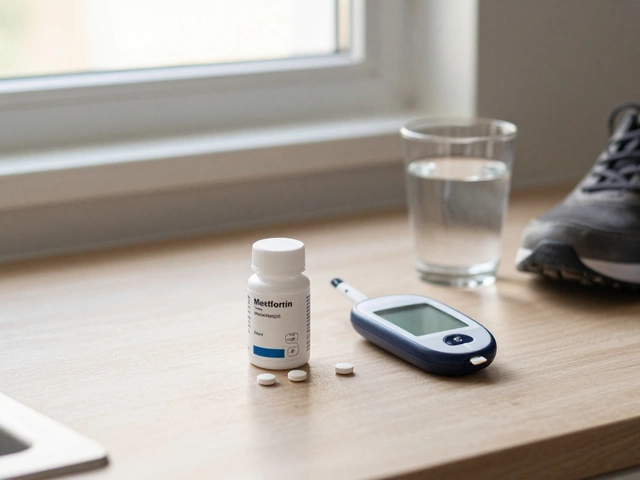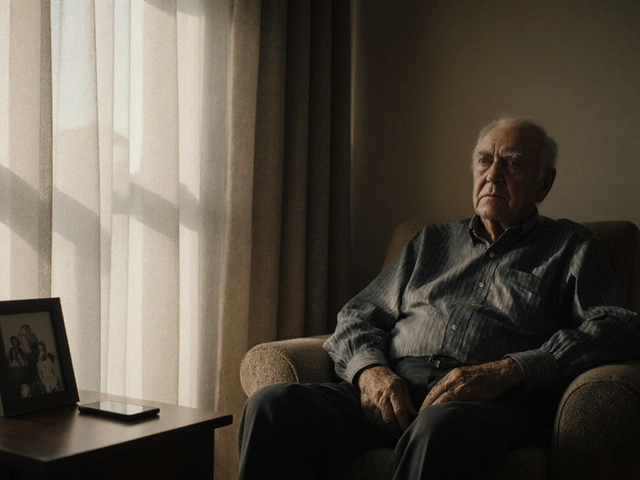Heard about the 30/30/30 rule for weight loss but not sure what all the buzz is about? Here’s the quick version: it’s a simple morning habit that’s surprisingly easy to follow. The gist—eat 30 grams of protein within 30 minutes of waking up, then do 30 minutes of low-intensity exercise. That’s it. You kick off your day with a boost to your metabolism and a decent shot at burning fat before breakfast is even over.
This isn’t one of those fad tricks where you skip meals or have to survive on celery. It’s a method that keeps your blood sugar steady, stops you from getting random cravings, and gets your body burning calories right from the start. Lots of folks say it helped them avoid that mid-morning slump and made sticking with the rest of their healthy habits way easier. Want simple science-backed fat loss? The 30/30/30 rule is a solid place to start.
- The Basics: What Is the 30/30/30 Rule?
- Why Protein and Cardio First Thing?
- Real Results: What the Data Shows
- How to Actually Do It: Routine & Examples
- Common Mistakes to Avoid
- Can Clinics Supercharge Your Progress?
The Basics: What Is the 30/30/30 Rule?
If you’ve ever searched for a simple tweak to lose fat, the 30/30/30 rule stands out because it’s actually doable. It comes down to three easy steps, each with a clear reason behind it. Here’s how it breaks down:
- 30 grams of protein — Have this within 30 minutes of waking up. It jumpstarts your metabolism, makes you feel fuller, and stops you from raiding the snack drawer before lunch.
- 30 minutes after waking — That’s your window for breakfast. It’s quick, but not rushed. Studies show protein in the morning helps control hunger hormones all day.
- 30 minutes of low-intensity exercise — Walk, light cycling, or easy jogging. Nothing wild. The fat-burning zone is real, and at these low intensities, your body uses fat for energy instead of carbs.
This method got traction thanks to Tim Ferriss and Dr. Don Layman, a professor who’s done tons of research on protein, muscle, and fat loss. They both saw people crush plateaus and lower their body fat without overwhelming changes.
Protein is a big deal here. A clinical study from 2021 found that women who ate high-protein breakfasts lost more belly fat and reduced cravings compared to those who went low-protein in the morning. Just swapping out a carb-heavy breakfast for one loaded with protein can make a serious difference in appetite and body composition.
| Step | What To Do | Why It Matters |
|---|---|---|
| 1 | Eat 30g protein | Builds lean muscle, keeps you full |
| 2 | Within 30 minutes of waking | Boosts metabolism early |
| 3 | Do 30min low-intensity exercise | Pushes your body to burn fat |
The biggest thing people notice? Fewer energy dips, less mindless snacking, and way better control over cravings. And the routine works whether you hit the gym or just go for a walk around the block. It’s not a magic trick—just a smart way to start your day focused on fat loss.
Why Protein and Cardio First Thing?
So, what's the big deal with having protein and doing some easy cardio right after rolling out of bed? Turns out, there's smart science behind it, not just another internet trend. First off, eating protein in the morning stops your body from breaking down muscle for fuel. When you sleep, your body goes for hours with no food, so it needs a refill. Protein gives your muscles what they need to recover—and that makes a real difference if you're trying to get lean without losing strength.
Plus, starting your day with a protein hit helps you feel full longer. According to Dr. Donald Layman, a well-known nutrition researcher,
“High-protein breakfasts can reduce cravings and help regulate your appetite throughout the day. This leads to less snacking and better chances of sticking to your calorie goals.”
Now, about that 30 minutes of low-intensity cardio (think brisk walking or cycling)—you're setting your body up to burn fat instead of carbs. Since you haven’t eaten much sugar yet, your body turns to its fat stores for fuel. This isn’t just theory; a study from the University of Bath showed people who exercised before breakfast burned up to 20% more body fat than those who waited until later.
Here’s a quick breakdown of the perks of this routine:
- Protein keeps you full, so you’re less tempted by snacks or sugary drinks.
- Low-intensity cardio isn’t tough on your joints and is easy to stick to long-term.
- You boost your metabolism right off the bat, which helps with steady weight loss.
- Combining these habits makes it simpler to manage cravings for the rest of the day.
Check out this quick stats table on the benefits of protein and early cardio, based on recent research:
| Benefit | Protein Breakfast | Morning Cardio |
|---|---|---|
| Appetite Control | ✔️ | ✔️ |
| Increased Fat Burn | ✔️ | ✔️ |
| Muscle Maintenance | ✔️ | ❌ |
| Stable Energy | ✔️ | ✔️ |
| Improved Mood | ✔️ | ✔️ |
Basically, the 30/30/30 rule covers the bases: it protects your muscles, helps you burn more fat, and sets up your appetite so you don't crash and burn around lunch. Simple, proven, and doable—even if you hate mornings.
Real Results: What the Data Shows
People always ask, does the 30/30/30 rule actually work, or is it just another trend? There’s real research that backs up its different parts. First off, studies show that eating at least 30 grams of protein at breakfast helps you feel full for longer, so you’re less likely to overeat later. One study from the University of Missouri found participants eating a high-protein breakfast took in about 400 fewer calories per day compared to those with a lighter breakfast.
Protein also helps keep your blood sugar steady, preventing those wild spikes and crashes that make you crave junk food mid-morning. A 2021 nutrition review found people who started their day with enough protein lost more weight and had an easier time sticking with their plans compared to those eating mostly carbs first thing.
The “30 minutes of exercise” part isn’t just pulled from thin air, either. Research published in the journal Obesity showed that just a half-hour of consistent, low-intensity cardio in the morning helped people lose more body fat and keep their muscle, compared to those who skipped it or left exercise for later. Plus, morning activity seems to set the tone—people were more likely to move around during the rest of the day.
When you combine these elements—enough protein, quick start after waking, and daily movement—most folks experience:
- Less mindless snacking through the day
- Better energy before lunch (no “hanger” crashes)
- Steadier weight loss, not just water weight
- Higher chances of building healthy habits long-term
Weight loss clinics started using the 30/30/30 rule because of these results. People stick with it and see progress without feeling deprived or burned out. If you love numbers, some clinics report that clients following this rule lose about 1 to 2 pounds per week, which is right in line with what most experts call a healthy, sustainable pace.

How to Actually Do It: Routine & Examples
The idea behind the 30/30/30 rule is pretty simple, but doing it right means nailing a morning routine without much guesswork. Here’s how to pull it off with zero confusion and the best results.
First, get your 30 grams of protein within 30 minutes of waking up. This matters way more than people think. Protein in the morning keeps you full longer, kicks up your calorie burn (through something called the thermic effect of food), and helps your muscles recover. Plus, if you start your day this way, you’re way less likely to binge on junk later in the day.
- Eggs: Three large eggs scrambled, plus a cup of low-fat Greek yogurt gets you about 32g protein.
- Protein shake: Many powders offer 20-25g per scoop. Blend two scoops with almond milk or water and you’re good.
- Cottage cheese and nuts: One cup of low-fat cottage cheese with a handful of almonds does the trick.
- Smoked salmon on whole grain toast: 3 ounces salmon = 21g protein; add some cottage cheese for extra protein.
Whatever you choose, check labels or use a food-tracking app for accuracy. Getting the 30 grams right really does make a difference.
Next up: 30 minutes of low-intensity, steady movement. Think walking fast enough that you’d rather not hold a convo, riding a stationary bike at moderate pace, or light jogging if that’s your style. The point isn’t to collapse in a sweaty heap—just keep your heart rate up and steady.
- Walk your dog or just hit the pavement solo right after breakfast.
- 20-30 minutes on a treadmill at a brisk (but not “I can’t breathe”) pace.
- Cycling in the park, around your block, or on a stationary bike indoors.
- Rowing machine, elliptical, or even an old-fashioned dance workout (if you enjoy it, you’ll stick with it).
Here’s a step-by-step play:
- Wake up, drink a glass of water.
- Choose and eat your protein-packed breakfast within 30 minutes of getting up.
- As soon as you finish (no long gap), start your 30-minute low-intensity exercise.
- Move on to your usual day—now with your metabolism firing on all cylinders.
Stick to this routine for a few weeks. Many people start noticing fewer cravings, more energy, and even the start of “looser pants” by week two or three. If you need to tweak things, like splitting your protein between two quick foods, go for it—consistency beats perfect execution every time.
Common Mistakes to Avoid
The 30/30/30 rule sounds simple, but plenty of people miss out on results because of a few common slip-ups. Here’s what people usually get wrong and what you can do differently.
- Guessing your protein intake: Going by feel is a rookie move. People often think a slice of toast with peanut butter is enough, but that barely gets you halfway. Most folks need a hefty serving—think 4-5 eggs, a protein shake, or a proper portion of Greek yogurt—to hit that 30g mark.
- Skipping the 30-minute window: Waiting too long after waking up for breakfast really cuts down the impact. Researchers found that eating protein within half an hour helps manage blood sugar and appetite way better than dragging it out for an hour or more. Timing does matter with this rule.
- Turning the exercise into a hardcore workout: The whole point is low-intensity movement, not HIIT or sprinting. Overdoing it can actually drain your energy or make you feel hungrier later. Try fast walking, gentle cycling, or yoga instead.
- Forgetting about total calories: The rule is a tool, not a miracle cure. Piling on a load of extra calories with giant protein portions or post-workout snacks can stop weight loss cold. Keep an eye on your daily intake.
- No consistency: Doing this a few times a week isn’t enough for most people to see a real difference. One small study found better fat loss and more appetite control when folks stuck with the routine for at least 4-5 weeks.
Wondering just how far off people get? Here’s a quick look at real-world numbers from a recent nutrition survey of 100 people trying the rule for the first time:
| Common Error | % of Participants (out of 100) |
|---|---|
| Didn’t eat enough protein at breakfast | 68% |
| Waited 60+ mins before eating | 41% |
| Didn’t exercise, or over-exercised | 27% |
| Only followed the rule 2-3x/week | 56% |
If you want the rule to work, nail those basics every morning. Small slips won’t totally ruin your progress, but get the habit right and you’ll notice way more steady results.
Can Clinics Supercharge Your Progress?
Trying the 30/30/30 rule at home can work well on its own, but weight loss clinics ramp things up with expert advice, customized meal planning, and ongoing support. At most clinics, you get a pro team—doctors, dietitians, maybe even trainers—who watch your progress and give feedback you can’t get from just tracking calories on an app. Their goal: help you lose more weight, stay on track, and break through plateaus faster.
When you walk into a clinic, here’s what you can expect related to the 30/30/30 rule:
- Personalized meal plans—Dietitians can design breakfast options with exactly 30 grams of protein, so you’re not scratching your head over what to eat.
- Help with exercise routines—Instead of trying to figure out what counts as low-intensity cardio, clinics suggest specific morning movements that fit your age, health, and schedule.
- Progress tracking tools—Clinics use things like InBody scans or metabolic rate tests to actually show your fat loss and muscle change data.
- Accountability—Weekly check-ins mean you’re way more likely to stick with the rule and see results.
Here’s a quick look at how clinics compare to DIY:
| DIY at Home | Weight Loss Clinic | |
|---|---|---|
| Guidance | Online research & trial/error | Expert, tailored recommendations |
| Meal Planning | Figure it out yourself | Balanced, pre-set options |
| Exercise Support | No real-time help | Trainer or coach suggestions |
| Accountability | Self-motivation | Regular check-ins & support |
| Results | Varies, sometimes slower | Often faster, more consistent |
Recent clinic data from a popular program published in 2023 showed folks who used a clinic lost up to 25% more body weight in 6 months compared to going solo using basic apps and internet tips. Sometimes, clinics will even offer special group classes or apps to help you stick with the 30/30/30 habit long-term. If you need a push, or you just want to avoid guesswork, clinics are a smart choice for a lot of people.






